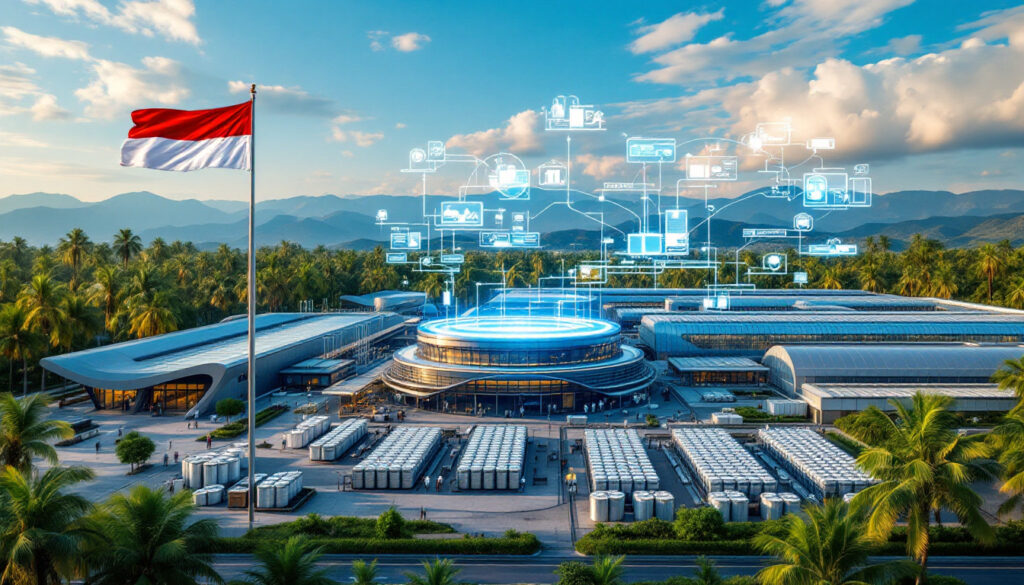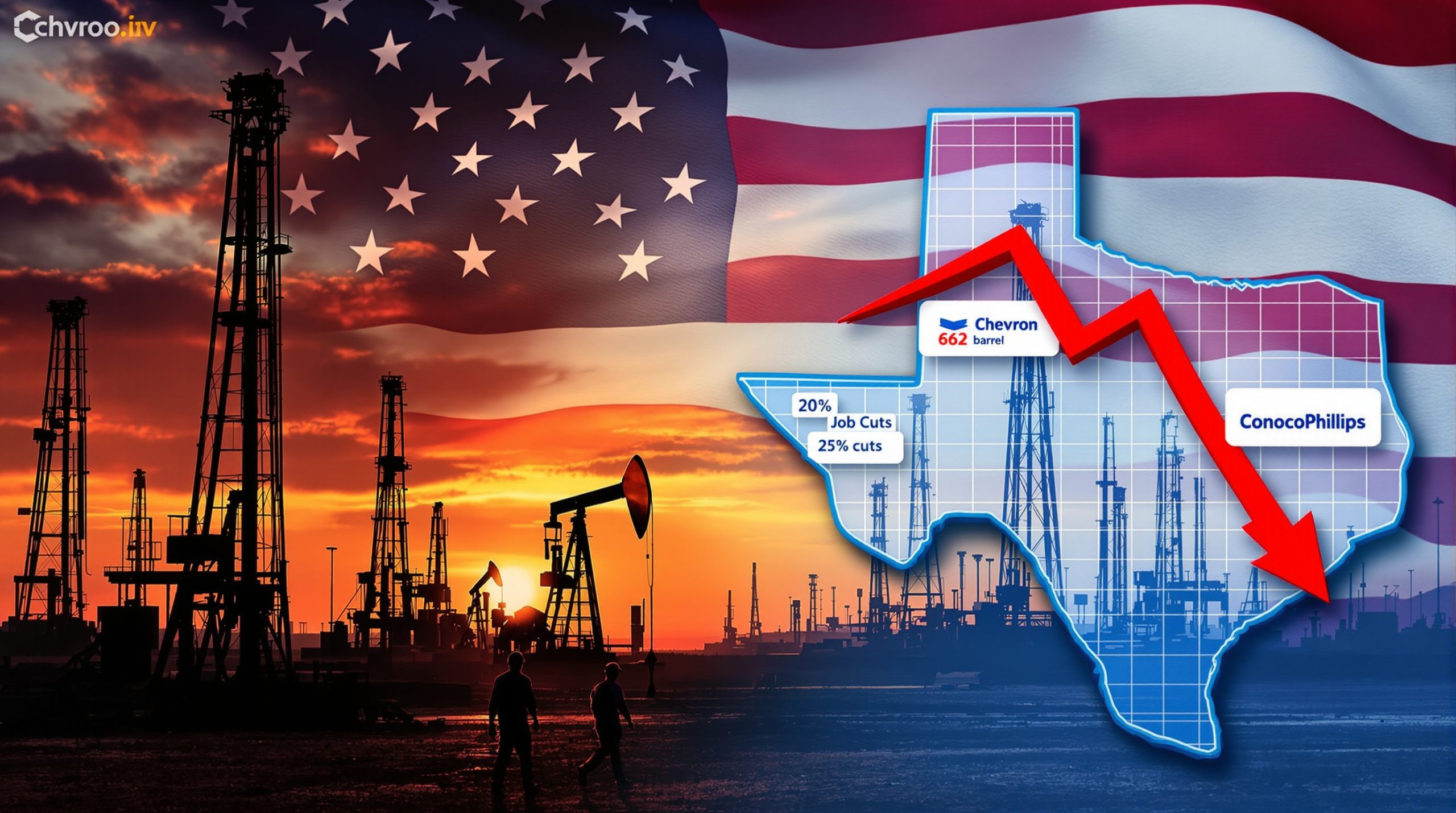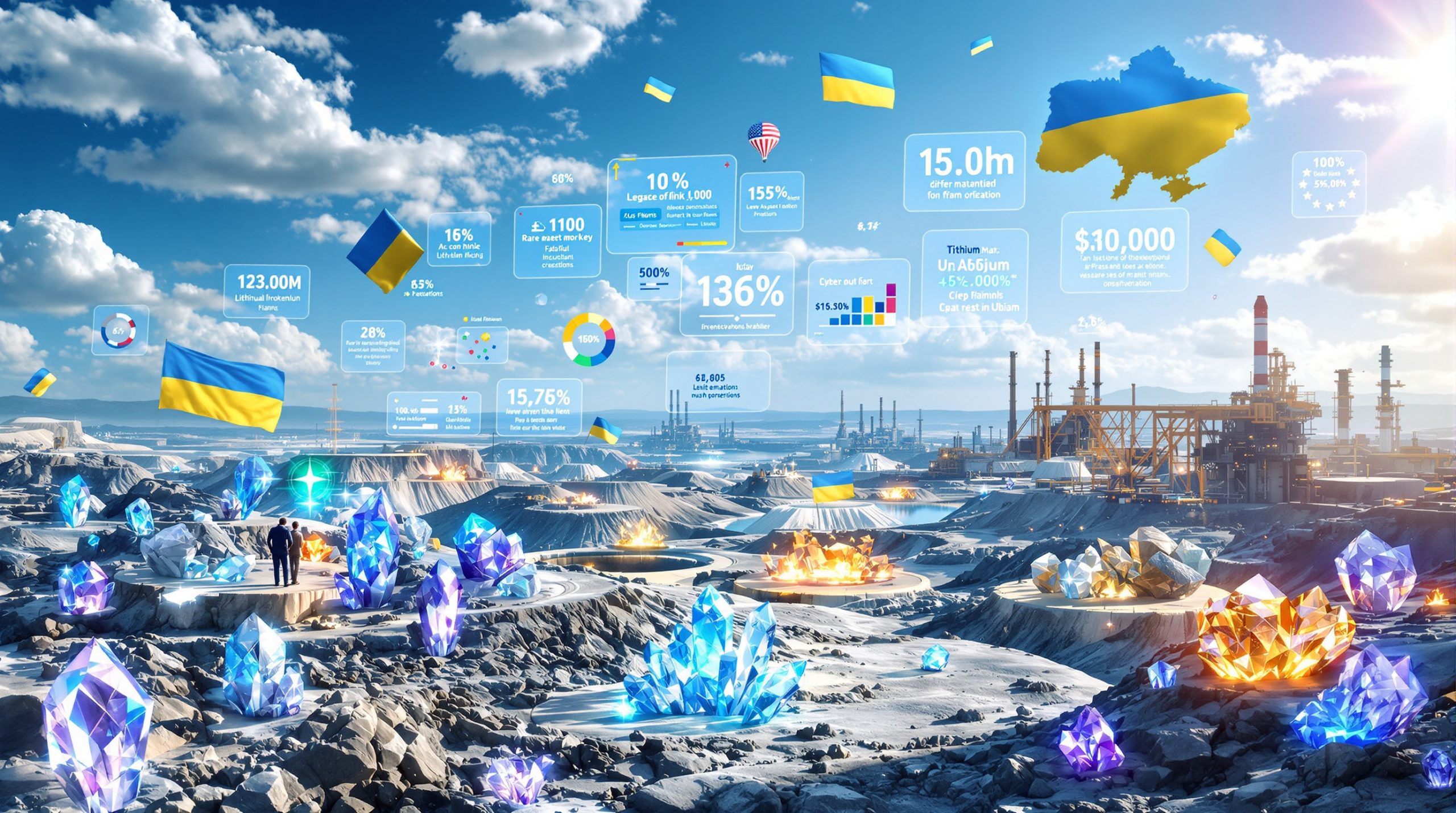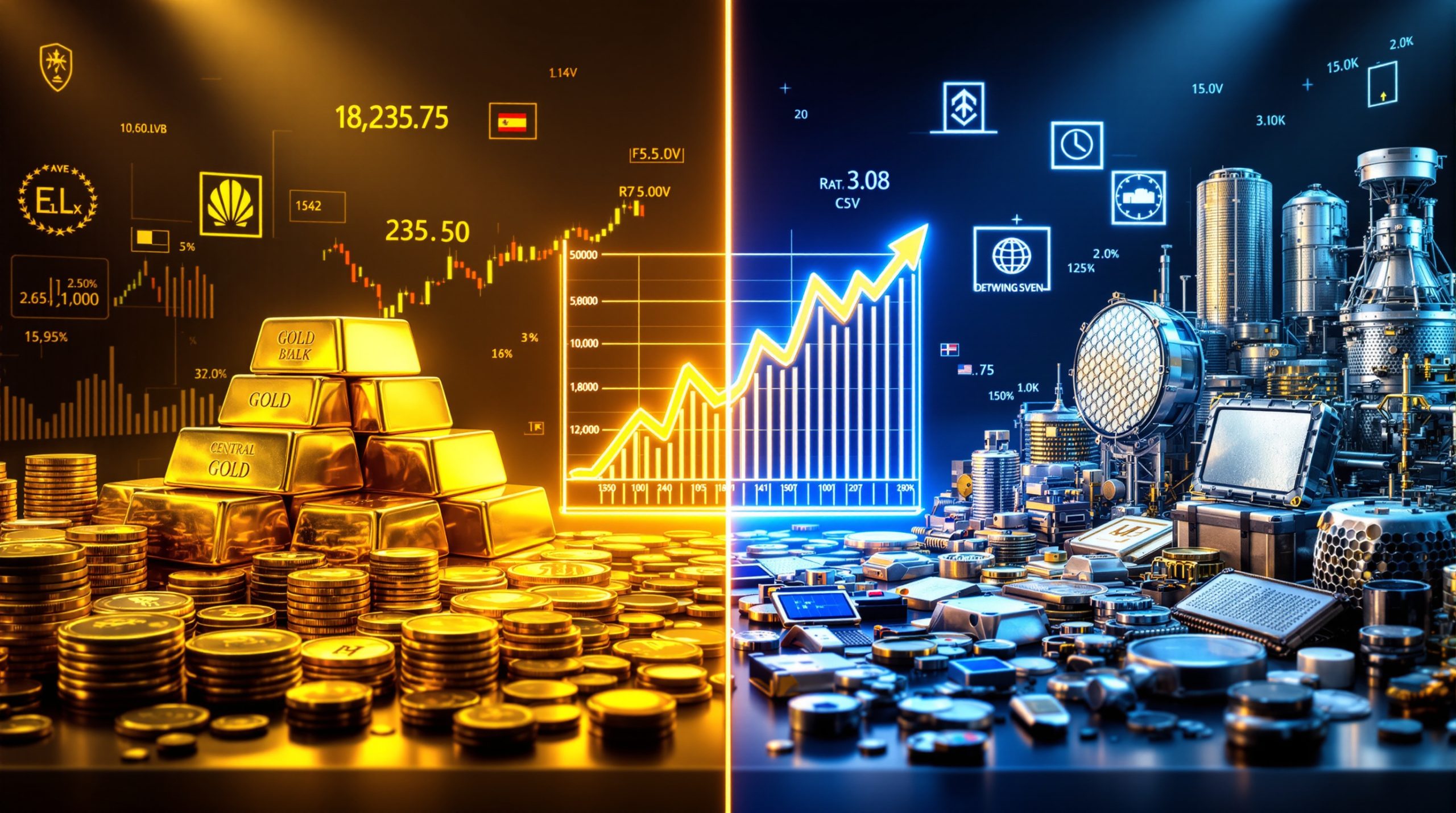What Is Driving LG’s $1.7 Billion Battery Investment in Indonesia?
Breaking Down the Expanded Investment Plan
LG Energy Solution has committed an additional $1.7 billion to expand its battery cell manufacturing facility in West Java, Indonesia, bringing the total investment to $2.8 billion. This significant financial commitment was confirmed by Indonesia’s Investment Minister Rosan Roeslani, who emphasized the strategic importance of this project for the country’s burgeoning electric vehicle industry. The expanded investment demonstrates LG’s continued confidence in Indonesia’s potential as a battery manufacturing hub, despite recently withdrawing from another Indonesian project valued at approximately $8.46 billion that was subsequently taken over by Chinese manufacturer Zhejiang Huayou Cobalt.
The timing of this announcement is particularly noteworthy as it comes amid growing global competition in battery manufacturing, with many industry analysts questioning whether current capacity expansion plans may lead to oversupply. By doubling down on its Indonesian operations, LG appears to be taking a calculated risk on the long-term growth of electric vehicle demand while securing access to critical raw materials.
Current Operations and Production Capacity
The investment targets the battery plant operated by HLI Green Power, a strategic joint venture between LG Energy Solution and Hyundai Motor Group that represents Indonesia’s first battery cell production facility. The plant began operations in 2024 with an initial annual production capacity of 10 gigawatt hours (GWh), enough to supply batteries for approximately 150,000 electric vehicles annually. The facility utilizes LG’s proprietary nickel-manganese-cobalt (NMC) battery technology, which delivers superior energy density compared to lithium iron phosphate (LFP) alternatives.
The West Java location provides significant logistical advantages, with proximity to both nickel processing facilities and Hyundai’s vehicle manufacturing operations. This integrated approach minimizes transportation costs and supply chain vulnerabilities while allowing for just-in-time manufacturing practices. The second phase of investment is expected to progressively increase production capacity over the next three years, with industry experts anticipating potential output exceeding 30 GWh annually once fully implemented.
Why Is Indonesia Becoming a Global Battery Manufacturing Hub?
Strategic Advantages of Indonesia’s Resource Landscape
Indonesia’s emergence as a battery manufacturing destination is primarily driven by its remarkable mineral wealth, particularly its nickel reserves which account for approximately 21% of global supply. This natural resource advantage has been strategically leveraged by the Indonesian government through policies restricting raw nickel exports since 2020, effectively forcing companies to establish domestic processing and manufacturing operations. For battery producers like LG, this creates a compelling case for localized production to secure stable access to this critical battery component.
Beyond raw materials, Indonesia offers competitive labor costs compared to other manufacturing locations, with average industrial wages approximately 35% lower than Chinese manufacturing centers. The country’s geographic positioning also provides efficient access to growing automotive markets across Southeast Asia, where electric vehicle adoption is accelerating due to government incentives and improving charging infrastructure. These combined factors have attracted approximately $29 billion in battery-related investments to Indonesia since 2020.
Indonesia’s EV and Battery Industry Development Strategy
The Indonesian government has implemented a comprehensive strategy to transform the country from a raw material exporter into a sophisticated manufacturing hub for electric vehicle components. This approach includes generous investment incentives specifically targeting battery manufacturers, including tax holidays, import duty exemptions, and subsidized land acquisition costs. These policies are part of a broader national roadmap aiming to establish an integrated electric vehicle ecosystem that spans from mineral extraction to vehicle assembly.
In comparison with neighboring countries like Thailand and Malaysia, Indonesia has taken a more aggressive approach to battery industry development by explicitly linking access to mineral resources with domestic manufacturing requirements. This strategy has successfully attracted not only Korean manufacturers like LG but also Chinese companies including CATL and Tsinghua Group, creating a competitive environment that accelerates technology transfer and skills development. According to government projections, Indonesia aims to capture approximately 6% of global battery manufacturing capacity by 2030.
How Does This Investment Align With Global EV Battery Market Trends?
Shifting Dynamics in the Global Battery Supply Chain
LG’s expanded investment in Indonesia reflects broader trends reshaping the global battery supply chain, particularly the growing emphasis on regionalization and resilience. Following supply chain disruptions during the pandemic and increasing geopolitical tensions, major automotive manufacturers are prioritizing partnerships that offer greater security and control over critical components. Battery production accounts for approximately 40% of electric vehicle manufacturing costs, making it a strategic priority for automotive companies seeking to maintain competitive pricing and stable production schedules.
Industry forecasts predict global battery demand will reach 2.5 terawatt-hours annually by 2030, representing a five-fold increase from 2023 levels. However, announced capacity expansions from major manufacturers could potentially exceed 3 terawatt-hours, raising concerns about potential oversupply and margin pressure. In this context, LG’s focus on securing preferential access to raw materials through its Indonesian operations provides a competitive advantage against manufacturers who remain dependent on commodity markets for critical inputs.
LG Energy Solution’s Global Manufacturing Footprint
The Indonesian investment represents an important piece of LG’s broader manufacturing strategy, which includes major facilities in South Korea, China, Poland, and the United States. This balanced global footprint allows LG to serve regional markets efficiently while mitigating geopolitical and supply chain risks. Compared to its investments in North America, where LG has committed approximately $5.5 billion to facilities in Michigan and Arizona, the Indonesian operation offers complementary advantages focused on material security rather than proximity to end markets.
LG’s approach contrasts with Chinese competitors like CATL and BYD, who have prioritized massive domestic manufacturing scale before international expansion. LG’s strategy emphasizes technology differentiation and supply chain integration, maintaining higher average selling prices than Chinese manufacturers who compete primarily on cost. With an estimated 14% share of global EV battery production, LG remains the second-largest manufacturer behind CATL (34%), highlighting the competitive intensity of this rapidly evolving industry.
What Makes the HLI Green Power Joint Venture Significant?
Strategic Partnership Between LG and Hyundai
The HLI Green Power joint venture exemplifies a growing trend of strategic alliances between battery manufacturers and automotive companies seeking closer integration and shared risk. LG contributes advanced battery technology and manufacturing expertise, while Hyundai brings automotive application knowledge and guaranteed demand through its vehicle production plans. This complementary partnership creates mutual benefits, allowing both companies to optimize battery designs specifically for Hyundai’s electric vehicle platforms while reducing transaction costs and coordination challenges.
The collaboration extends beyond simple supplier-customer relationships to include joint research and development initiatives focused on next-generation battery technologies. Engineers from both companies work together on improving energy density, thermal management systems, and fast-charging capabilities. This coordinated approach accelerates innovation cycles and ensures battery specifications precisely match vehicle requirements, creating competitive advantages for both partners in their respective markets.
Production Capabilities and Technology Implementation
The HLI Green Power facility employs LG’s most advanced manufacturing processes, with approximately 80% of production steps automated through industrial robotics and AI-driven quality control systems. The plant produces prismatic battery cells using LG’s proprietary NMC 811 chemistry (80% nickel, 10% manganese, 10% cobalt), which delivers energy density exceeding 700 Wh/L while reducing cobalt requirements compared to earlier formulations. This high-nickel chemistry is particularly well-suited to Indonesia’s resource profile.
Quality control standards at the facility exceed automotive industry requirements, with each cell undergoing over 1,000 individual tests during production and aging processes. The manufacturing lines incorporate digital twin technology that creates virtual models of each production batch, enabling predictive maintenance and real-time process optimization. This sophisticated manufacturing approach supports consistent battery performance while maximizing yield rates—critical for maintaining cost competitiveness in an increasingly crowded market.
What Economic Impact Will This Investment Create in Indonesia?
Job Creation and Workforce Development
The expanded LG facility is expected to create approximately 2,500 direct manufacturing jobs at various skill levels, from production operators to specialized engineers and technicians. These positions pay 30-40% above Indonesia’s manufacturing sector average, creating significant economic opportunities for local communities in the West Java region. Beyond direct employment, economic impact analyses suggest each battery manufacturing job typically generates 3-4 additional positions in supplier and service industries, potentially supporting over 10,000 total jobs through this investment.
To address the specialized training requirements for battery manufacturing, LG has established partnerships with 15 Indonesian technical colleges to develop curriculum specifically targeting battery production skills. These programs focus on electrochemical engineering principles, automation systems maintenance, and quality control protocols—creating a sustainable talent pipeline while transferring valuable technical knowledge to Indonesia’s education system. The company has committed approximately $15 million to these workforce development initiatives over the next five years.
Local Supply Chain Development Opportunities
Beyond direct manufacturing, LG’s investment creates significant opportunities for Indonesian companies to integrate into the battery supply chain as component suppliers and service providers. Approximately 35% of non-critical inputs for battery production could potentially be sourced locally, including packaging materials, electrolyte additives, and various mechanical components. The government has established a Battery Industry Development Center to help local enterprises meet international quality standards and certification requirements necessary to become qualified suppliers.
The economic multiplier effects extend to infrastructure development, logistics services, and various support industries. Regional economic planners estimate that each dollar of direct battery investment typically generates $1.75-$2.25 in additional economic activity through supplier networks and employee spending. However, significant challenges remain for local businesses aiming to meet the exacting quality standards required for battery components, where even minor defects can have serious safety implications.
What Challenges Must LG Navigate in This Expansion?
Operational and Infrastructure Considerations
Battery manufacturing requires substantial infrastructure support, particularly reliable power supply and water management systems. The LG facility consumes approximately 120 megawatts of electricity at full capacity, equivalent to powering 100,000 Indonesian homes. To ensure reliability, the company has invested in dedicated substation facilities and backup generation systems. Water usage is another critical consideration, with the production process requiring approximately 6 cubic meters of ultrapure water per megawatt-hour of battery capacity produced.
Transportation infrastructure presents ongoing challenges, with battery components and finished products requiring specialized handling and security protocols. The facility’s location, approximately 60 kilometers from Jakarta’s main port, necessitates careful logistics planning to avoid delays and damage during transit. These operational considerations have required close coordination with Indonesian authorities to ensure infrastructure development keeps pace with manufacturing expansion.
Market and Competitive Pressures
LG’s investment in Indonesia battery factory occurs against a backdrop of intensifying global competition in battery manufacturing, with industry overcapacity concerns growing as numerous manufacturers expand production simultaneously. Chinese manufacturers like CATL and BYD are particularly aggressive, leveraging government support and vertical integration to reduce costs. Recent analysis indicates Chinese battery manufacturers offer prices 12-15% below Korean competitors, creating margin pressure throughout the industry.
Technological disruption represents another significant risk factor, with sustainable lithium production methods and sodium-ion batteries potentially rendering current lithium-ion investments obsolete within this decade. While these technologies remain commercially unproven at scale, their development is accelerating with major breakthroughs reported by companies like QuantumScape and Toyota. LG must balance aggressive capacity expansion with flexibility to adapt manufacturing processes for future battery chemistries—a strategic challenge requiring careful capital allocation decisions.
How Does This Investment Impact Indonesia’s Sustainability Goals?
Environmental Considerations in Battery Manufacturing
LG’s facility incorporates advanced environmental management systems designed to minimize ecological impact while maintaining production efficiency. The manufacturing complex features zero-liquid discharge water recycling that recovers 95% of process water, dramatically reducing consumption compared to conventional battery production. Energy efficiency measures, including heat recovery systems and smart building technologies, reduce carbon emissions approximately 30% below industry averages for comparable facilities.
Chemical management represents a critical environmental consideration, with battery production involving various potentially hazardous materials including organic solvents and metal compounds. The facility employs closed-loop handling systems and advanced air filtration technology to prevent workplace exposure and environmental contamination. These sophisticated environmental controls add approximately 7-9% to overall capital costs but are essential for maintaining regulatory compliance and meeting increasingly stringent international sustainability standards.
Contribution to Indonesia’s Clean Energy Transition
By enabling greater domestic electric vehicle production, LG’s battery manufacturing facility directly supports Indonesia’s climate commitments under the Paris Agreement, which include reducing greenhouse gas emissions 29% by 2030. Transportation accounts for approximately 28% of Indonesia’s carbon emissions, making vehicle electrification a key decarbonization strategy. Each gigawatt-hour of battery production can support approximately 15,000-20,000 electric vehicles, potentially reducing carbon emissions by 45,000-60,000 tons annually compared to internal combustion alternatives.
The facility’s energy requirements also create incentives for renewable power development, with LG negotiating power purchase agreements specifically targeting geothermal and hydroelectric sources that leverage Indonesia’s substantial renewable resources. This alignment between industrial development and sustainability goals represents a potential model for responsible resource utilization in developing economies, though significant challenges remain in balancing economic growth with environmental protection.
What Does the Future Hold for Battery Manufacturing in Indonesia?
Expansion Potential Beyond Current Investments
Industry analysts anticipate LG’s current investment represents only the first phase of a longer-term development strategy that could eventually establish Indonesia as the company’s primary manufacturing hub for the Asia-Pacific region. Potential future expansions could include dedicated production lines for energy storage systems servicing Indonesia’s growing renewable energy sector, as well as specialized battery types optimized for two-wheeled vehicles which represent the dominant form of transportation across Southeast Asia.
The existing facility design incorporates expansion provisions that would allow capacity to potentially reach 50 GWh with additional investment of approximately $2.5-3 billion. Land has been secured for these future phases, with preliminary permits and environmental approvals already in place. This forward-looking approach allows for rapid scaling as market conditions warrant while protecting against land price speculation that often follows initial industrial development.
Long-term Strategic Positioning in the Global Battery Market
Indonesia’s evolution from raw material supplier to sophisticated manufacturer represents a critical test case for resource nationalism policies in the battery sector. If successful, the approach could be replicated by other mineral-rich nations seeking to capture more value from their natural resources while building advanced industrial capabilities. The Indonesian government aims to establish the country as the world’s fifth-largest battery producer by 2030, targeting approximately 400 GWh of annual production capacity.
For LG, the Indonesian investment provides a strategic hedge against both supply chain disruptions and increasingly restrictive trade policies in Western markets. As the United States and European Union implement domestic content requirements for batteries eligible for consumer incentives, manufacturers with diversified production footprints gain flexibility to serve multiple markets efficiently. This global positioning, combined with access to stable raw material supplies, strengthens LG’s competitive resilience in an increasingly uncertain geopolitical environment.
FAQ: Understanding LG’s Battery Investment in Indonesia
What types of battery cells will be produced at the facility?
The HLI Green Power facility primarily manufactures nickel-manganese-cobalt (NMC) 811 prismatic cells, which offer high energy density particularly suited for passenger vehicles requiring longer ranges. Production includes both 65 Ah and 80 Ah cell formats, designed specifically for Hyundai’s E-GMP electric vehicle platform. Future production plans include LFP (lithium iron phosphate) cells for specific applications where lower cost is prioritized over energy density, particularly for entry-level vehicles and energy storage applications.
How does this investment compare to other battery manufacturing projects globally?
LG’s $2.8 billion total investment in Indonesia represents a mid-sized battery manufacturing project by global standards. For comparison, CATL’s largest production complex in Ningde, China required investment of approximately $7.8 billion for 120 GWh capacity, while Tesla/Panasonic’s Nevada Gigafactory represented approximately $5 billion for 35 GWh. The Indonesian facility’s investment intensity (dollars per gigawatt-hour) is slightly higher than Chinese projects but lower than comparable Western facilities, reflecting a balance between automation and leveraging Indonesia’s competitive labor costs.
What percentage of production will be exported versus used domestically?
According to planning documents, approximately 65% of initial production is allocated to Hyundai’s Indonesian vehicle assembly operations, with the remaining 35% exported to Hyundai facilities in other Asian markets. As production expands, export percentages are expected to increase to approximately 60% by 2027, with South Korean, Vietnamese, and Indian automotive plants as primary destinations. This export-oriented approach aligns with Indonesia’s strategy to move up the value chain from raw material exports to finished high-technology products.
How will this facility impact electric vehicle pricing in Southeast Asia?
By localizing battery production—the most expensive component in electric vehicles—the LG-Hyundai partnership aims to reduce EV prices in Southeast Asian markets by approximately 12-15% compared to imported alternatives. This cost advantage derives from eliminated import duties, reduced logistics costs, and optimized supply chain integration. Hyundai’s Indonesian-produced IONIQ 5 model is expected to retail at approximately $38,000 USD equivalent, approximately $6,000 below comparable imported electric vehicles, potentially accelerating EV adoption across the region.
What safeguards are in place to ensure environmentally responsible manufacturing?
The facility operates under Indonesia’s strictest environmental classification (PROPER Gold standard), requiring quarterly audits and continuous emissions monitoring. Specific environmental safeguards include closed-loop water recycling systems, solvent recovery technologies that capture 99.8% of volatile organic compounds, and comprehensive waste management protocols that ensure hazardous materials are properly processed. Additionally, LG has committed to renewable energy targets of 40% by 2025 and 75% by 2030 for the facility’s electrical needs.
How is the Indonesian government supporting this investment?
Beyond raw material access advantages, the Indonesian government has provided substantial support including a 10-year tax holiday (0% corporate income tax), followed by 50% reduced rates for an additional two years. Import duties are waived for manufacturing equipment
Ready to Discover the Next Major ASX Mining Opportunity?
Stay ahead of the market with Discovery Alert’s proprietary Discovery IQ model, which instantly identifies significant mineral discoveries announced on the ASX, turning complex data into actionable investment insights. Explore why major mineral discoveries can lead to exceptional returns by visiting the Discovery Alert discoveries page and position yourself for success with our 30-day free trial.




